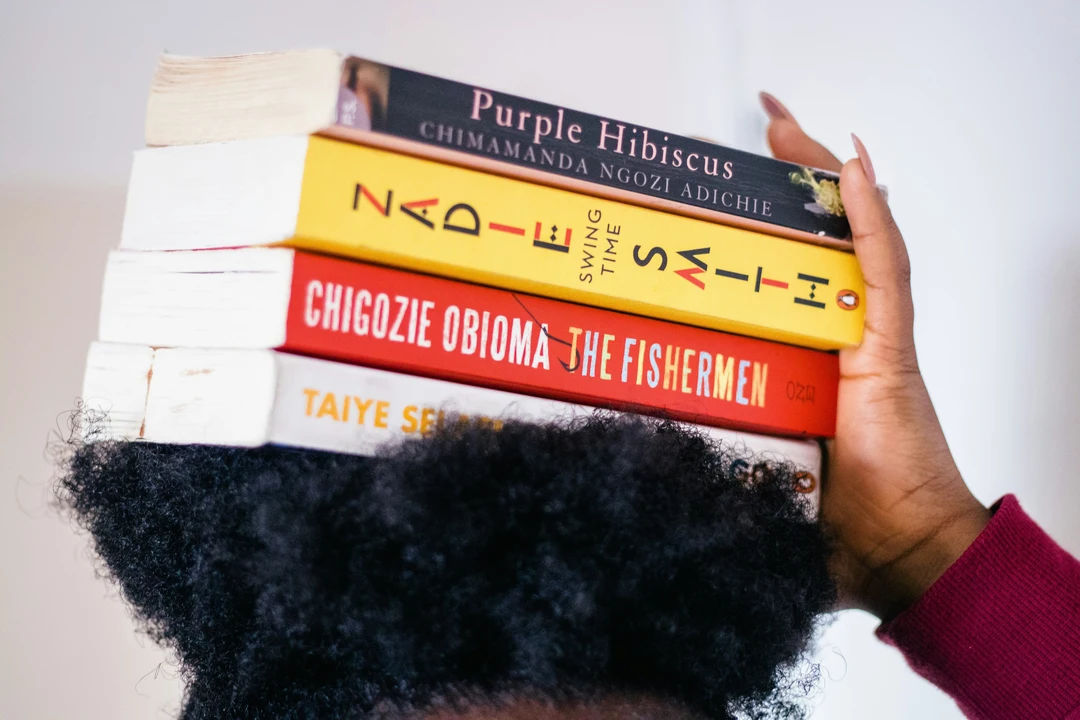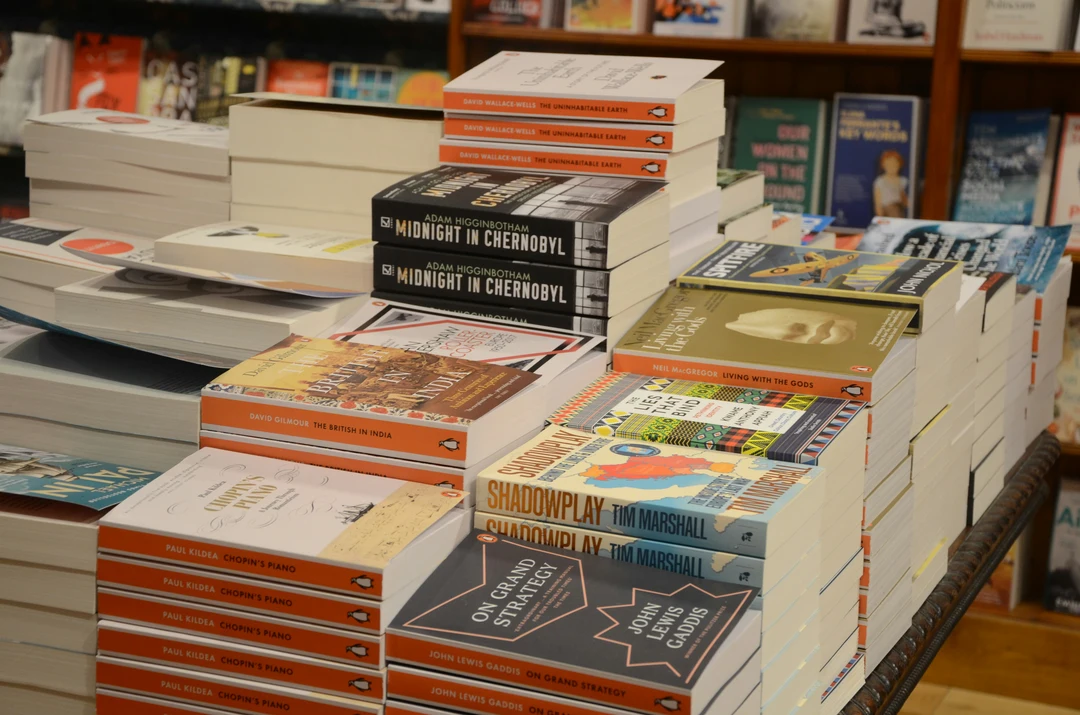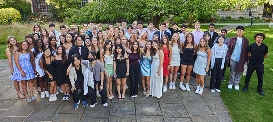Reading not only enriches the mind; it also connects us across borders and between cultures. Books offer us the opportunity to discuss and debate key themes and characters, and hear and be inspired by others’ thoughts and ideas. It’s a rewarding – and very fun! – pastime.
With that in mind, we’ve curated a list of compelling books perfect for your teen book club – whether you’re just setting it up, or looking for fresh suggestions for an established group.
Firstly, What Is a Book Club?
A book club is traditionally a reading group where all members read the same book and then meet to discuss the book. Many book clubs meet on a regular basis, coming together to share their thoughts and feelings on what they’ve read.
Book clubs are great for fostering a shared reading experience and a sense of community. Combining intellectual stimulation and social connection, many book clubs meet in person, once or twice a month, although this can vary depending on the group.
In recent years, there’s also been a rise in virtual book clubs and online forums for people to discuss their reading experience.
Niche book clubs have also emerged, discussing specific genres, themes and literary movements, or aimed at certain reader demographics – like specialised book clubs for teens.
Why Should Teens Join a Book Club?
Book clubs are an engaging and social way to enhance your reading, critical thinking and creative skills, all of which will help you on your academic and professional journey.
I. Gain academic benefits
Engaging in a book club is the perfect opportunity to enhance your reading and critical thinking skills. The ability to think deeply about what you’ve read, and consider its unique impact, is a valuable skill for school and university life. The more you practise this skill, the more you’ll advance your critical thinking skills.
Joining a book club entails reading and analysing books from a wide variety of genres, many of which you may never have explored or even considered reading before. You may discover a new genre that ends up being your favourite.
Not to mention, the better you are at reading and critical thinking, the better your own writing will be. The connection between reading and writing is an essential one. Our summer Creative Writing course encourages students to explore a variety of genres to further hone their writing skills – one lends itself very well to the other.
II. Grow socially and emotionally
Having meaningful discussions with other teen readers is a wonderful way to meet new people and make new friends.
Talking about books also expands your communication and articulation skills, while reading about new perspectives, opinions and experiences fosters empathy and understanding.

III. Develop personally
Sharing your opinions with other members in a book club setting allows you to build your self-confidence and explore your personal preferences and interests.
Reading widely also promotes cultural awareness, especially when reading translated works from a variety of cultural backgrounds.
IV. Foster a lifelong love for reading
Reading a book every other week or month (for example) alongside friends is an excellent way to develop consistent reading habits at a young age. Not only is this a healthy and valuable pastime, but it also cultivates a lifelong appreciation for reading and connecting over literature.
V. Prepare for the future
The communication skill set developed in book clubs is also transferable to your future academic and professional endeavours. University seminars, tutorials and discussion groups all involve a good deal of critical thinking, debate and literary analysis. Putting forward and maintaining your viewpoint with confidence, while remaining receptive to others’ ideas, are also crucial skills in any professional workplace.
How to Start Your Own Teen Book Club

Getting started
A diverse mix of members will significantly enrich book club discussions, so it’s important to ask lots of people, and to advertise the club well. You could advertise on social media or ask around your school.
Try to focus on those you feel would be particularly interested and would get a lot out of a book club. Usually book clubs have between eight and ten people, so keep this in mind. Ideally, you want enough people to stimulate interesting discussions, but not so many that conversations are chaotic or unmanageable.
Once you’ve found your group of members, consider how often you should host meetings. On average, how long does the group need to finish a book? Do you want to meet at set intervals throughout the book, like half way through or after a certain number of chapters, or would you prefer to meet once everyone has finished? Twice a month is a popular option, but reflect on what’s going to work best for your members.
If you can think of a location well-suited to a book club meeting, that’s also not too far to travel, that’s perfect! Otherwise, virtual meetings are a solid alternative, especially if a member is unwell or unable to make a meeting.
Establishing ground rules
Make sure your discussions stay respectful, and that you establish clear and appropriate guidelines early on. Things to consider include:
- RSVP requirements. Members should let others know in good time if they’re unable to make a meeting.
- Punctuality. Everyone should aim to be on time to book club meetings.
- The importance of reading the set book. It’s difficult to discuss the book if nobody’s read the book!
- Respecting other members’ ideas and opinions, and avoiding discriminatory or offensive language. Fostering a safe and inclusive environment is essential in making a space where members want to contribute their ideas.
- How best to have fun!
If anyone does say something upsetting to others, or expresses controversial ideas, make sure. the member understands why this could be upsetting, and talk to anyone affected afterwards, if necessary.
If someone seems less comfortable getting verbally engaged, you could gently encourage them to express their opinion, making sure to stay receptive to their contributions.
Selecting books
Having a rotating book selection contributes to a well-rounded reading list. The more variety in genre, form (i.e. poetry collections, literary novels, autobiographies) and languages, the better and more enriching the book club will be!
It can be a good idea to allow members to suggest books they think the group would enjoy. This can help to maintain a good variety of texts by including everyone’s tastes and interests. You could also create a voting system, where members vote for their favourite book through an online form or during an in-person meeting.
Creating a comfortable environment
In the first meeting, ice-breaking activities are a great way to foster a welcoming environment.
‘Just One Lie’ is a fun variation of ‘Two Truths and a Lie’, where members mingle and ask each other questions, noting the answers on post-it notes. However, everyone must include one lie in their answers. The result is a personal board of interesting facts (and a lie) about your co-members. Throughout the initial meeting, you can use your board as a conversation starter to discover the lies.
‘Guess Who’ is another fun ice breaker. Everyone writes the name of a famous person or character on a post-it note and puts it on someone else’s forehead (making sure the person doesn’t see). Everyone then tries to guess the name on their head by asking a series of yes/no questions.
Activities like charades, quizzes and speed ‘dating’ are always fun as well.
After checking dietary requirements and snack preferences, refreshments will also make the book club sessions even better!

14 Books to Read at Your Teen Book Club
Without further ado, here are 14 perfect book choices for your teen book club! These are varied in genre, style, subject matter and cultural perspective, providing a list of books to spark engaging discussions.
Contemporary fiction
Contemporary fiction spans from the end of the 20th century to today, featuring events that could happen to real people, in real settings. Subgenres of contemporary literature include contemporary romance, comedy and fantasy.

1. White Teeth by Zadie Smith
White Teeth is a 2000 novel by British author, Zadie Smith. The book focuses on the later lives of two wartime friends – the Bangladeshi, Samad Iqbal, and the Englishman, Archie Jones – and their families in London. The novel focuses on Britain’s relationship with immigrants from the British Commonwealth.
White Teeth is particularly suitable for a teen book club as it explores cultural identity in an in-depth, intelligent way. Its richness and multitude of themes lends itself very well to a variety of in-depth discussion topics, such as those about the protagonists’ friendship:
I. How well do the two friends really understand each other?
II. What are the different dialects used? When are they used, why, and what is the effect of this?
III. Why did Smith decide that Irie would never be able to identify the father of her child?
2. Tomorrow, and Tomorrow, and Tomorrow by Gabrielle Zevin
Tomorrow, and Tomorrow, and Tomorrow is a 2022 novel written by Gabrielle Zevin. This Sunday Times bestseller follows best friends, Sam and Sadie, through the trajectory of their life: their creative collaboration, friendship and rivalry, fame and art, betrayal and tragedy, ‘perfect worlds and imperfect ones’. Their love is handled with wisdom and tenderness, the book a love letter to life, connection and collaboration.
Tomorrow, and Tomorrow, and Tomorrow works very well for a teen book club, deftly and sensitively dealing with identity politics, trauma, ableism and misogyny, all through the lens of gaming. It’s an engaging read, lending itself to a variety of discussion topics, such as the type of love between Sadie and Sam:
I. Why did they never pursue a romantic relationship?
II. How does Sam’s disability shape his own sense of self and view of the world?
III. Games are often used to memorialise and to connect. If you were to create a game to preserve some aspect of your reality, or to dedicate to your loved one, what would it be like?
3. Never Let Me Go by Kazuo Ishiguro
Japanese author, Kazuo Ishiguro, is well-known for his reserved, narratively-intimate style and gradual unfolding of plot, for novels of ‘great emotional force’. Never Let Me Go is no exception. This 2005 science fiction novel follows three best friends, Kathy, Tommy and Ruth, at Hailsham – a seemingly-idyllic boarding school experience until a frightening discovery is made.
This book is equally both perfect escapism and a social and cultural critique of arrogance and how we treat society’s most vulnerable. The novel reflects our own world, as works with dystopian elements often do, providing many potential topics of discussion. For example:
I. Kathy often directly addresses the reader. What does she assume about her addressees? Are there any good examples of this? What do we gain from such an intimate access into Kathy’s mind?
II. What kind of moral and emotional responses does the novel provoke?
III. Does Never Let Me Go promote human cloning as a legitimate possibility, or as morally repulsive?
Classic literature
Classic literature is defined as exemplary or especially noteworthy works. The genre encompasses a wide range of authors such as William Shakespeare, Virginia Woolf, Mark Twain, Jane Austen and F. Scott Fitzgerald.
Often complex and in-depth, these texts tell us a lot about the context in which they were written, while simultaneously transcending time. Classic works tend to articulate universal themes and concerns in a fresh, nuanced way, and are often subversive. They’re memorable – and remembered – for a reason.

4. Jane Eyre by Charlotte Brontë
Jane Eyre is a bildungsroman “novel of intense power and intrigue,” following orphan Jane throughout her troubled childhood and into her adult life as she navigates womanhood, love, loneliness, desires and her social condition. Yet, as her feelings for brooding Mr Rochester strengthen, she uncovers an enormous and terrible secret that leads her to question whether she should follow love or her own convictions.
Championed as a great feminist work, this novel is perfect for young people as it deals with identity, gender politics, love, friendship and many more timeless themes. It’s particularly useful to discuss key parts of the novel, such as the episode after Mason’s visit to Thornfield. Jane wonders: “What crime was this, that lived incarnate in this sequestered mansion, and could neither be expelled nor subdued by the owner?” (p. 237).
I. What crime exactly does Bertha represent? Why does Rochester keep her at Thornfield?
II. Does Rochester ever actually intend to marry Blanche Ingram? If so, when does he change his mind? If not, why does he go to such lengths to make Jane believe he does?
III. Do you think the character of Jane Eyre could be described as “feminist”, and do you think this is a feminist text?
5. Beloved by Toni Morrison
Beloved is a 1987 novel by American writer, Toni Morrison. A “spellbinding and dazzlingly innovative portrait of a woman haunted by the past”, Beloved is one of the BBC’s “100 Novels That Shaped Our World”.
The book takes place in the mid 19th century, and follows a formerly-enslaved Black family. Haunted by the trauma of slavery, Sethe meets the spectre of her dead daughter once more (whose tombstone simply reads “beloved”).
This book is perfect to read and discuss. It not only intelligently discusses race, love, womanhood and beauty, but does so with clarity and warmth. Beloved is iconic and innovative, and helped to shape a generation of readers and writers. Possible discussion points include:
I. To what extent does slavery appear to have stripped Sethe of her identity?
II. How is this made clear in the novel?
III. How does the dehumanising impact of slavery manifest itself in Sethe’s character, thoughts and behaviours?
6. The Great Gatsby by F. Scott Fitzgerald
The Great Gatsby is set in Jazz Age New York and follows Jay Gatsby, a self-made millionaire, and his pursuit of Daisy Buchanan, a wealthy young woman he loved in his youth. This book is a dazzling character study and portrait of the American dream (and to what extent it can be achieved), as well as a lyrically beautiful and brutally realistic piece of literature.
There’s a reason The Great Gatsby is often studied at school. It’s a quick and easy read, yet still thought-provoking and complex. You could consider:
I. What is the symbolism of the green light?
II. What does Gatsby’s idealised love for Daisy represent?
III. How does Fitzgerald present the American Dream? Is it ever achievable?
Sci-fi and fantasy
Science fiction and fantasy books typically use imaginative concepts and narratives to explore the human condition. The genre is a fun opportunity for book clubs to reflect on contemporary issues through speculative fiction.

7. Dune by Frank Herbert
Often hailed as one of the best science fiction novels ever, Herbert’s 1965 novel is set on the desert planet Arrakis. Dune tells the story of Paul Atreides, heir to a noble family and tasked with ruling an inhospitable world where the only thing of value is the “spice” melange, a drug capable of extending life and enhancing consciousness.
The novel has been adapted into a critically acclaimed film, with a sequel soon to be released. Dune extends beyond a work of science fiction, containing Machiavellian intrigue, politics, mythology, imperialism, environmentalism, religion and the nature of power.
With so many key themes to meditate upon in one singular book, this is the perfect novel to read and talk about. Possible topics of discussion include:
I. How are the female characters in the novel portrayed? Is this a positive representation? What would you do to improve this?
II. How does Dune compare to other works of science fiction, in this sense?
III. How successfully does Herbert work real issues and themes into this fantasy setting?
8. Fahrenheit 451 by Ray Bradbury
Bradbury’s 1953 dystopian science fiction novel is an enlightening, unique and unforgettable commentary on how mass media reduces interest in reading literature. A political allegory told through a gripping story, Fahrenheit 451 presents a future American society where books have been personified and banned.
The novel is told from the viewpoint of Guy Montag, a “fireman” who burns any books that are found. He soon becomes disillusioned with his role of censoring literature and destroying knowledge, eventually quitting his job and committing himself to the preservation of literary and cultural writings.
Fahrenheit 451 is a short read that will leave you contemplating the text for a long time. You might want to explore topics such as:
I. To what extent does Bradbury actively encourage individuality over conformism?
II. To what extent does today’s society promote conformism, especially in comparison to the society portrayed in the novel?
III. What can we learn from Fahrenheit 451?
9. The Alchemist by Paulo Coelho
The Alchemist (1988) is an uplifting and inspiring story about self-discovery. It follows Santiago, an Andalusian shepherd boy who yearns to travel in search of a worldly treasure. His journey leads him to treasures far different than he ever could have imagined. The protagonist’s quest teaches us many lessons about listening to our hearts, recognising and seizing opportunity, and following our dreams.
The Alchemist is the perfect choice to introduce your book club to philosophy in an accessible and enjoyable way. There are lots of potential discussion topics like:
I. Why do you think Melchizedek tells Santiago about the life of the baker?
II. What point is Melchizedek trying to get across to Santiago?
III. Do you believe in the concepts of the Language of the World, the Soul of the World, and the Personal Legend presented in the book?
Mystery and thriller
The mystery and thriller genres are a great choice for book club members looking for an element of suspense, intrigue and tension.

10. Gone Girl by Gillian Flynn
Gone Girl is a 2012 crime thriller novel by American writer, Gillian Flynn, which has made the New York Times bestseller list. The story follows the sudden disappearance of Amy Dunne on her fifth wedding anniversary with her husband, Nick Dunne. The police suspect Nick. Amy’s friends reveal she was afraid of him, and that she kept secrets from him, but he swears it isn’t true. A police examination of his computer also shows strange searches, which he denies having made.
The book is a gripping, complex and thought-provoking mystery, leaving readers asking more and more questions. It deals with identity and personality formation, dysfunctional coping skills, and authenticity vs role-playing.
I. What most surprised you in the plot?
II. Did you consider Nick to be guilty at the beginning of the novel?
III. Do you ever sympathise with Amy’s character?
11. Murder on the Orient Express by Agatha Christie
Of course, any mystery list has to include the great Agatha Christie. Murder on the Orient Express follows the mystifying death of a passenger on a luxury steam train: an American tycoon is dead, and no one seems to know who is behind it. Isolated, and with a killer on the train, detective Poirot must solve the murder before it’s too late.
This book is definitely worth reading. Christie is a master, intelligently weaving the mystery to effectively build suspense.
I. Were you able to work out who the murderer was before the end?
II. Can you pinpoint which literary techniques Christie uses to write a mystery so well?
III. How does mystery writing differ from other genres?
Non-fiction
Non-fiction includes a variety of genres and topics, all working to inform, educate and inspire. Non-fiction books are an excellent way to understand different perspectives and broaden your horizons.

12. The Diary of a Young Girl by Anne Frank
This diary is a timelessly powerful and remarkable testament of strength and the power of the human spirit. Written eloquently by Anne Frank herself, The Diary of a Young Girl recounts her experience of hiding in Amsterdam to avoid being sent to a concentration camp during the Nazis’ reign of power in World War Two.
This book is particularly inspiring, unparalleled in its literary force for such a young girl. Though it may be upsetting for readers, its moving nature and the history behind it makes the work all the more worthwhile reading and meditating upon. Book club members can discuss:
I. What are Anne’s struggles with identifying as both a Jewish girl and a German citizen?
II. What else is she concerned with in her diary?
III. Does her style of writing (often humorous) surprise you?
13. I Am Malala: How One Girl Stood Up for Education and Changed the World by Malala Yousafzai
Many people know the story of Malala Yousafzai, the Pakistani girl shot by the Taliban because she tried to go to school and encourage other girls to pursue education. After moving to England, she studied at the University of Oxford and now works to inspire women all over the world to go to school, achieve their goals, and speak out against sexism and injustice.
Her story of standing up to the Taliban is inspiring to say the least, and the book takes readers deeper into her story and mindset. The book is an excellent opportunity to learn a great deal about the political realities of the world and the injustices that exist.
I. How much of Malala’s story did you know?
II. What did you find most inspiring? Why?
III. What could we learn from Malala’s journey, and what changes can we make in the world?
14. Why I’m No Longer Talking to White People About Race by Reni Eddo-Lodge
Award-winning journalist, Reni Eddo-Lodge, eloquently articulates her frustrations about how race and issues about race are discussed and dealt with in the UK in this 2017 book. She unflinchingly deals with white dominance, race and class, feminism and much more.
This book is illuminating for everyone, and is the perfect way to understand a very important issue, encouraging us all to reflect.
I. What is Eddo-Lodge’s main aim in this book?
II. How effectively does she argue?
III. What is the impact of the title, Why I’m No Longer Talking to White People About Race?
We hope our list of books have inspired you to explore a variety of stories at your next book club meeting.
Happy reading!

By Keziah Mccann
Keziah is a second-year French and Italian student at Balliol College, University of Oxford. As well as learning languages and travelling, her interests include writing, journalism, film and cooking.





